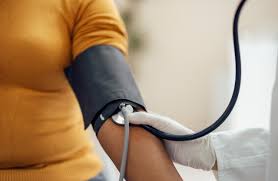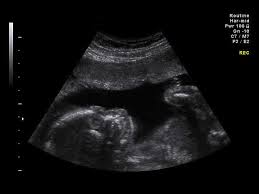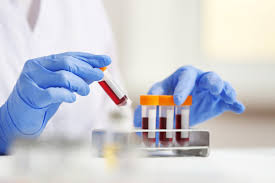
Prenatal Screening Tests During Pregnancy
Preparing for a healthy pregnancy starts with the right prenatal testing. Our Prenatal Testing Checklist helps you track essential screenings, blood tests, and ultrasounds throughout each trimester. Understanding these tests ensures early detection of potential risks and keeps both you and your baby safe. Stay informed and confident throughout your pregnancy journey with this easy-to-follow guide.

Carrier Screening
When: Ideally before pregnancy or early in the first trimester (weeks 1–12).
Why: Determines if parents are carriers of genetic conditions such as:
Cystic fibrosis
Sickle cell disease
Tay-Sachs disease
Thalassemia
Determines the risk of passing genetic disorders to the baby.
Method: A blood test or saliva sample from the parents to analyze their DNA for specific genetic conditions. The test checks if the parents carry genes for genetic disorders (e.g., cystic fibrosis, sickle cell anemia).
First Trimester Screening (Combined Screening)
When: Month 1–3 (Weeks 1–13) — First Trimester
Purpose: Screens for chromosomal abnormalities like Down syndrome (Trisomy 21), Edwards syndrome (Trisomy 18), and Patau syndrome (Trisomy 13).
What it includes: Blood test (PAPP-A and hCG) and nuchal translucency (NT) ultrasound.
Nuchal Translucency (NT) Ultrasound: Measures fluid at the back of the baby’s neck.
Blood test (PAPP-A & hCG)
Blood Test: Measures pregnancy-associated plasma protein A (PAPP-A) and human chorionic gonadotropin (hCG).
When it’s done: Between 11 and 14 weeks.
How it’s done:
A blood test is taken from the mother’s arm to measure levels of PAPP-A and hCG.
A nuchal translucency ultrasound is performed by applying gel to the mother’s abdomen and using an ultrasound probe to measure the fluid at the back of the baby’s neck.

Non-Invasive Prenatal Testing (NIPT) / Cell-Free DNA Screening
When: 10 weeks onward
Why: Screens for chromosomal abnormalities such as Down syndrome, Trisomy 18, and Trisomy 13 by analyzing fetal DNA in the mother’s blood.
Method: Blood test which detects chromosomal abnormalities using fetal DNA in the mother’s blood. It is more accurate than first-trimester screening but still not diagnostic.
How it’s done:
A simple blood draw from the mother’s arm.
The sample is analyzed for fragments of fetal DNA circulating in the mother’s blood to check for chromosomal abnormalities.
Rh Factor Screening (8–12 weeks)
Determines if the mother is Rh-negative and needs Rhogam later in pregnancy.
Month 4–5 (Weeks 14–22) — Second Trimester
How it’s done:
A blood test to determine if the mother is Rh-positive or Rh-negative.
If Rh-negative, Rhogam is given at 28 weeks and after delivery if the baby is Rh-positive.
Maternal Serum Quadruple Screen (Quad Screen)
When: 15–22 weeks (best between 16–18 weeks)
Why: Measures AFP, hCG, Estriol, and Inhibin A to assess the risk of Down syndrome, neural tube defects (e.g., spina bifida), and Trisomy 18.
Components:
Alpha-fetoprotein (AFP)
Human chorionic gonadotropin (hCG)
Estriol
Inhibin A
How it’s done: A blood sample from the mother’s arm is tested for four substances (AFP, hCG, Estriol, Inhibin A).
Ultrasound (Anatomy Scan)

When: 18–22 weeks, 6–7 (Weeks 23–28) — Second Trimester / Early Third Trimester
Why: Ultrasound to examine fetal anatomy (brain, heart, spine, etc.) for structural abnormalities, monitors, detects multiple pregnancies, and evaluates placental position.
Method: Detailed ultrasound scan
How it’s done: A detailed ultrasound where gel is applied to the mother’s belly, and a transducer (ultrasound wand) is used to visualize the baby’s organs, limbs, and overall growth.
Gestational Diabetes Screening (Glucose Challenge Test / Glucose Tolerance Test)
When: Between 24 and 28 weeks.
Why: Detects gestational diabetes, which can lead to complications like high birth weight or preterm labor through a glucose tolerance test.
Method: Drinking a glucose solution followed by a blood test to measure sugar levels.
How it’s done:
The mother drinks a glucose solution (sweet liquid).
After one hour, a blood sample is taken to measure glucose levels.
If results are high, a three-hour glucose tolerance test may be done with multiple blood samples.
Rh Factor Screening
When: First trimester (around 8–12 weeks)
Why: Identifies Rh-negative mothers who may need Rh immunoglobulin (Rhogam) to prevent complications in future pregnancies. Rh-negative mothers receive Rhogam at 28 weeks and after delivery if the baby is Rh-positive. Prevents complications in Rh-negative mothers carrying an Rh-positive baby.
Method: Blood test
How it’s done: A shot (injection) is given in the mother’s arm or buttock to prevent Rh incompatibility issues.
Fetal Kick Count Monitoring (After 28 weeks)
Mother tracks baby’s movements at home to check fetal well-being.
When: After 28 weeks. Month 8–9 (Weeks 29–40) — Third Trimester
Why: Assesses baby’s movements to detect possible distress.
Method: The mother tracks baby’s kicks and movements at home.
How it’s done:
The mother counts fetal movements (kicks, rolls, flutters) at home.
Typically, 10 movements in 2 hours is considered normal.

Non-Stress Test (NST)
When: Third trimester (after 28 weeks, especially for high-risk pregnancies)
Why: Assesses fetal heart rate and oxygen levels, especially if there are concerns about fetal growth or movement.
Method: Monitors fetal heart rate in response to movements to check for distress.
How it’s done:
The mother wears two sensors on her belly:
One measures the baby’s heart rate.
One measures uterine contractions.
The test lasts about 20–40 minutes while the baby’s movements and heart rate are monitored.
Group B Streptococcus (GBS) Screening
When: Between 35–37 weeks
Purpose: Checks if the mother carries Group B Streptococcus, which can cause infections in newborns.
Method:
- Swab of the vagina and rectum to test for GBS bacteria to prevent newborn infection during delivery
- Identifies if the mother is a carrier of GBS, which can cause infections in the baby during delivery.
- If positive, antibiotics are given during labor to prevent infection in the baby.
Biophysical Profile (BPP)
When: Third trimester (after 32 weeks, if needed)
Why: To assess fetal health, especially in high-risk pregnancies.
How it’s done:
Uses a combination of ultrasound and a non-stress test (NST).
Measures fetal movement, breathing, heart rate, muscle tone, and amniotic fluid levels.
Additional Ultrasounds (if needed)
-
- What it includes: Ultrasound to monitor fetal growth, position, and amniotic fluid levels.
- Purpose: Ensures the baby is developing properly and prepares for delivery.
- When it’s done: As needed, typically in the third trimester.
Breakdown of Blood Tests
Includes: HIV, Syphilis (VDRL), Human T-lymphotropic virus (HTLV), Rubella, Hepatitis B
Why is it done?
HIV: Prevents mother-to-child transmission; antiretroviral treatment is started if positive.
VDRL (Syphilis test): Untreated syphilis can cause stillbirth or congenital syphilis.
HTLV: Detects retrovirus infections that may affect the baby.
Rubella: If the mother is not immune, rubella infection can cause congenital defects.
Hepatitis B: If positive, the baby will need immunoglobulin and vaccination at birth.
Frequency: Done early in pregnancy and repeated if at high risk.
Result Interpretation:
Negative: No infection.
Positive: Requires further testing and treatment.
Important before delivery? Yes, especially for HIV, syphilis, and hepatitis B to prevent newborn infection.
Complete Blood Count (CBC)
Includes: Hemoglobin, White Blood Cell Count, Platelets
Why is it done?
Detects anemia, infection, and blood clotting issues.
Low hemoglobin increases the risk of complications during delivery.
Frequency: First trimester, second trimester, and before delivery.
Result Interpretation:
Low Hemoglobin (<11 g/dL) → Anemia (Iron or folate supplements needed).
Low Platelets (<150,000) → Risk of bleeding complications.
High White Blood Cell Count → Possible infection.
Important before delivery? Yes, to check for anemia or clotting problems.
Renal Function Tests
Includes: Creatinine, Blood Urea Nitrogen (BUN), Electrolytes
Why is it done?
Assesses kidney function and electrolyte balance.
Detects pre-eclampsia or underlying kidney disease.
Frequency: Once in early pregnancy and if high blood pressure or preeclampsia is suspected.
Result Interpretation:
High Creatinine/BUN → Kidney dysfunction.
Abnormal Electrolytes → May indicate kidney disease or dehydration.
Important before delivery? Only if preeclampsia is present.
Liver Function Tests (LFTs)
Includes: AST, ALT, Bilirubin, ALP, Albumin
Why is it done?
Assesses liver function, especially in conditions like preeclampsia, HELLP syndrome, and cholestasis.
Frequency: Early pregnancy and if symptoms like severe itching or high blood pressure appear.
Result Interpretation:
High AST/ALT → Liver disease or preeclampsia.
High Bilirubin → Cholestasis of pregnancy (requires close monitoring).
Important before delivery? Yes, if there are signs of liver dysfunction or preeclampsia.
Urine Culture
Why is it done? Detects urinary tract infections (UTIs), which can cause preterm labor.
Frequency: First trimester and repeated if history of UTI.
Result Interpretation:
Bacteria present → Requires antibiotics.
Important before delivery? Yes, to prevent infection complications.
Urinalysis
Why is it done? Checks for protein (preeclampsia), glucose (gestational diabetes), and infections.
Frequency: Done at every prenatal visit.
Result Interpretation:
Proteinuria → Possible preeclampsia.
Glucose → Possible gestational diabetes.
Important before delivery? Yes, to check for preeclampsia and infection.
Preeclampsia (PE) Screening
Includes: Blood Pressure, Proteinuria, Uric Acid, Doppler Ultrasound
Why is it done? Detects high-risk mothers for preeclampsia, which can cause serious complications.
Frequency: First trimester and monitored throughout pregnancy if at risk.
Important before delivery? Yes, to prevent severe complications.

Blood Group & Crossmatch
Why is it done? Identifies blood type and Rh status to prepare for transfusion if needed.
Frequency: Early pregnancy and before delivery if at risk of hemorrhage.
Important before delivery? Yes, in case of emergency transfusion.
Most Important Tests Before Delivery
HIV, Syphilis, Hepatitis B (Prevent infection transmission)
CBC (Hemoglobin, Platelets) (Check for anemia or bleeding risks)
Blood Group & Crossmatch (Prepare for potential blood transfusion)
Urinalysis & Preeclampsia Screening (Monitor for high blood pressure and protein in urine)
Liver & Kidney Function Tests (If preeclampsia is suspected)
Disclaimer: The information provided in this content is for general informational purposes only. It is not intended as medical or healthcare advice, diagnosis, or treatment. Always seek the advice of a qualified healthcare professional with any questions you may have regarding a medical condition or healthcare decisions.


